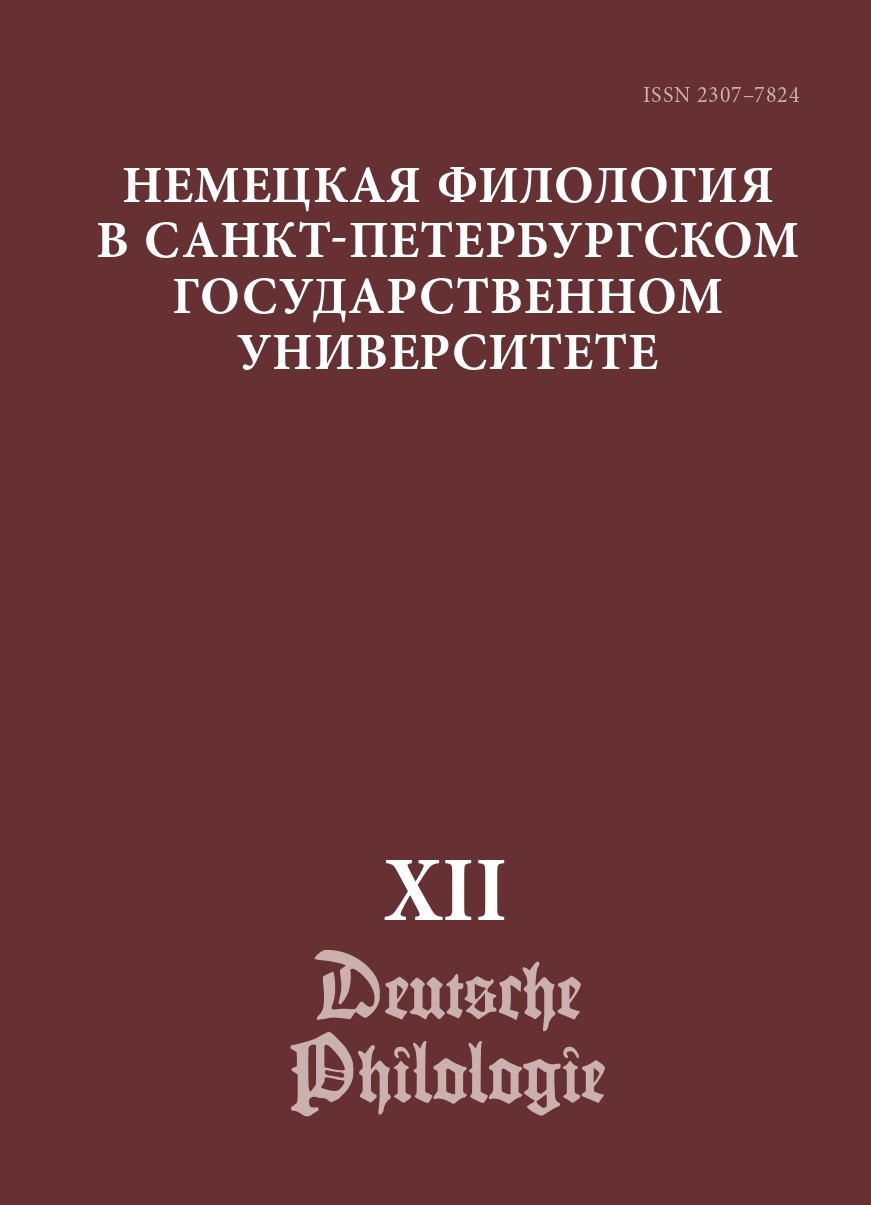GRAPHIC SYMBOLISM AND VERBAL CONTEXT (BASED ON GERMAN SPECIALIZED TEXTS OF THE 17th–18th CENTURIES)
DOI:
https://doi.org/10.21638/spbu33.2022.122Abstract
Modern linguistic analysis of speech works has to take into account the multi-channel functioning of human communication. German written specialized texts of the Enlightenment (17th to 18th centuries) are characterized by the authors’ desire for a visual representation of knowledge. Therefore, the study of visual components andtheir role in the transfer of special knowledge and techniques for practical actions, is becoming relevant and of great importance. The material of the study was three texts on agriculture: Stratagema Oeconomicum, Oder Akker-Student by S.Gubertus; HausFeld-Artzey-Koch-Kunst- und Wunder-Buch by I.Thieme; and Oeconomus Prudens et Legalis, oder Allgemeiner Klug- und Rechts-verständiger Haus-Vatter by F.Florin. The purpose of the study is to provide a linguistic analysis of the ways in which graphic/visual components are integrated into a verbal context. In the course of the study, visual components of the books’ title pages were identified and described, and ways of introducing graphic and visual elements into the text were analyzed. The graphic elements are integrated either directly into the text or through various schemes and drawings with a title and description. The most illustrative way of conveying special knowledge in the practical field of activity is a combination of graphic symbols and a visual image of an object with a verbal explanation of the object’s structure. The integration of visual representation into the verbal context in conjunction with other components of the message makes it possible to fully and adequately explain the structure and functional purpose of the object.
Downloads
Downloads
Published
How to Cite
Issue
Section
License
Условия передачи авторских прав на статьи и рецензии, опубликованные в ежегодном периодическом издании «Немецкая филология» регулируются условиями Лицензионного Договора автора с Санкт-Петербургским государственным университетом. В соответствии с Лицензионным Договором опубликованные материалы находятся в открытом доступе, а авторам бесплатно предоставляется неограниченные возможности их распространения и самостоятельного архивирования.




